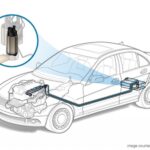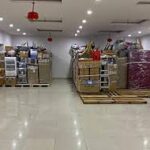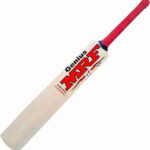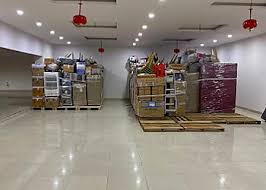Cardboard ammo boxes have greatly advanced in design and materials, achieving a commendable balance of weight and durability. The shift from single-wall to double- and triple-wall structures has enhanced compressive strength, allowing these boxes to withstand heavy loads and harsh environmental conditions. Moisture-resistant coatings and reinforced seams further contribute to their reliability in preserving sensitive contents. While they offer advantages over metal boxes, such as cost-effectiveness and sustainability, rigorous real-world testing underscores their resilience. Exploring the intricacies of these boxes reveals their versatile applications and innovations shaping future designs for improved performance and environmental responsibility.
Main Points
- Cardboard ammo boxes have evolved from single-wall designs to robust double and triple-wall configurations, enhancing strength and durability.
- Moisture-resistant coatings and reinforced seams protect contents from environmental factors, ensuring ammunition integrity during storage.
- Compression resistance and structural design elements like fluting increase stacking strength, preventing deformation under load.
- Real-life durability tests confirm their ability to absorb shock and support heavy loads while maintaining structural integrity.
- Cardboard is a sustainable option, being lightweight, biodegradable, and easily recyclable, promoting eco-friendly practices in storage solutions.

Overview of Ammo Box Materials
Ammo boxes are constructed from a variety of materials, each chosen for specific characteristics that enhance their functionality and durability. The most common materials include metal, plastic, and cardboard, each exhibiting distinct material properties that contribute to their suitability for ammunition storage.
Metal ammo boxes, often made from steel or aluminum, are renowned for their strength and resistance to external impacts, making them ideal for rugged environments. The manufacturing processes for metal boxes typically involve stamping and welding, ensuring structural integrity.
Plastic ammo boxes, manufactured through injection molding, are lightweight and moisture-resistant, offering a different set of advantages, especially in humid conditions. The polymer materials used can withstand a range of temperatures, providing flexibility in various storage scenarios.
Cardboard boxes, while less durable than their metal and plastic counterparts, are valued for their lightweight and cost-effective properties. The manufacturing process involves corrugating and folding, allowing for efficient production and easy disposal.
Each material’s properties directly influence the box’s performance, making informed material selection critical for optimizing the strength and durability of ammo boxes.
The Evolution of Cardboard Ammo Boxes
Historically, the use of cardboard for ammunition storage has evolved considerably, driven by advancements in material science and manufacturing techniques. The historical development of cardboard ammo boxes began in the early 20th century, when manufacturers sought lighter and more cost-effective alternatives to traditional metal containers. Early designs focused primarily on basic structural integrity, often using single-wall cardboard, which proved inadequate for rigorous handling and transportation. As the need for reliable and safe ammunition packaging grew, innovations in design became essential for safeguarding ammunition integrity.
As demand for more robust solutions grew, advancements in manufacturing processes led to the introduction of double-wall and triple-wall configurations. These innovations provided enhanced strength and durability, allowing cardboard boxes to withstand greater stress and external elements. Additionally, the incorporation of moisture-resistant coatings and reinforced seams greatly improved the boxes’ longevity and reliability.
In addition to structural enhancements, the printing and labeling capabilities of modern manufacturing processes have enabled clearer identification of contents and safety information. This evolution reflects a shift towards not only functionality but also compliance with regulatory standards. Overall, the historical development of cardboard ammo boxes illustrates a continuous effort to balance efficiency, strength, and cost-effectiveness in ammunition storage solutions.
Key Features of Cardboard Strength
The structural integrity of cardboard ammo boxes is primarily determined by several key features that enhance their strength and functionality. One critical aspect is compression resistance, which refers to the box’s ability to withstand vertical loads without deformation. This property is crucial in preventing collapse during stacking and transportation, guaranteeing the contents remain secure. The design and material composition, including the use of multi-ply cardboard, greatly contribute to this resistance. Moreover, the use of durable materials guarantees that these boxes are designed to withstand harsh environmental conditions, reducing the risk of damage during transportation reliable and durable boxes.
Another important feature is moisture protection. Cardboard’s inherent properties can be augmented through coatings or laminations that provide a barrier against humidity and spills. This moisture protection is essential for preserving the integrity of the ammunition stored within, as exposure to damp conditions can lead to deterioration and malfunction of the contents.
The structural design, such as fluting and joint construction, plays a substantial role in enhancing overall strength. The combination of these features allows cardboard ammo boxes to function effectively in various environments, making them a reliable choice for storage and transport. Analyzing these characteristics provides insight into the engineering behind cardboard boxes, highlighting their suitability for demanding applications.
Comparing Cardboard and Metal Options
When evaluating options for ammunition storage and transport, it is important to compare the strengths and weaknesses of cardboard and metal containers. Cardboard advantages primarily include lightweight construction, cost-effectiveness, and ease of customization. These attributes make cardboard boxes particularly suitable for situations requiring frequent handling or transportation, as they reduce the overall weight and expenses associated with storage. Cardboard can be easily tailored to specific dimensions or designs, enhancing usability. The financial benefits of custom designs also contribute to their growing popularity among consumers. In addition, custom cardboard boxes allow for optimized shipping space utilization, which can lead to considerable cost savings.
Conversely, metal containers, while offering superior durability and resistance to physical damage, present several metal disadvantages. They tend to be notably heavier, which can complicate transport and handling. Furthermore, metal boxes are often more expensive to produce and purchase. Which may not be justified for users with lower storage needs. Additionally, metal can be prone to corrosion and may require extra protective coatings to maintain integrity over time, particularly in harsh environments.
Environmental Benefits of Cardboard
Cardboard presents significant environmental advantages that align with contemporary sustainability goals. Its primary benefit lies in its composition; cardboard is derived from renewable resources, primarily trees, which can be sustainably harvested. This renewable nature contributes to the overall sustainability benefits of using cardboard over non-renewable materials, such as plastics and metals. Furthermore, custom display boxes made from cardboard promote environmentally-friendly practices and reduce waste by utilizing eco-friendly options like recycled materials.
Cardboard is inherently biodegradable, breaking down naturally over time when disposed of properly. This characteristic contrasts sharply with conventional packaging materials that may persist in landfills for decades, contributing to environmental degradation. The biodegradability of cardboard not only reduces landfill volume but also minimizes the potential for harmful chemical leachates that can pollute the soil and waterways.
In addition, the recycling process for cardboard is efficient and well-established, allowing for the material to be repurposed into new products, thereby closing the loop in a circular economy. This recycling capability enhances the sustainability benefits associated with cardboard. Promoting resource conservation and reducing the carbon footprint associated with production.
Innovative Uses for Ammo Boxes
Ammo boxes, originally designed for the secure storage and transport of ammunition, have found a multitude of innovative applications beyond their intended purpose. Their robust construction and versatility lend themselves to various fields, particularly in creative repurposing and tactical organization. Furthermore, the premium custom cardboard ammo packaging guarantees. That these boxes maintain their integrity, making them an excellent choice for diverse uses.
- Storage Solutions: Ammo boxes excel in organizing tools, craft supplies, or camping gear, providing durable and stackable storage options.
- Emergency Kits: Their watertight design makes them ideal for housing emergency supplies, such as first-aid kits or disaster preparedness materials.
- Gardening: Repurposed ammo boxes can serve as unique planters, allowing for creative vertical gardening while maintaining a rustic aesthetic.
- Educational Tools: Educators can utilize ammo boxes for hands-on learning experiences in science or art classes, fostering engagement through tactile exploration.
These applications illustrate the adaptability of ammo boxes beyond military use. By embracing such innovative solutions, individuals and organizations can enhance their storage capabilities while promoting sustainable practices through creative repurposing. Ultimately, the tactical organization of items within these boxes not only maximizes space but also promotes accessibility and efficiency in various environments.
Real-Life Durability Tests
Although originally designed for military applications. The durability of ammo boxes has been rigorously tested across various real-life scenarios, revealing their resilience under diverse conditions. These tests frequently assess both impact resistance and weight capacity, two critical parameters that determine the practical utility of these containers.
Impact resistance tests simulate real-world situations where the boxes may experience drops, collisions, or other forms of mechanical stress. In controlled environments, ammo boxes have consistently demonstrated the ability to withstand significant force without compromising their structural integrity. Their design effectively absorbs shock, ensuring that contents remain secure and undamaged.
Weight capacity evaluations further underline the robustness of ammo boxes. Standard models are engineered to support substantial loads, often exceeding their nominal ratings without failure. This characteristic is particularly essential for applications where heavy items must be transported or stored safely.
Storage Solutions for Different Needs
When considering storage solutions for various needs. It is essential to analyze the specific requirements of the items being stored, as well as the environmental conditions they will encounter. Ammo boxes, with their robust design, provide versatile options for custom storage and portable organization. By evaluating the nature of the items, one can determine the most effective storage approach.
- Firearm Accessories: Use foam inserts within ammo boxes to secure and protect items like magazines and cleaning kits, ensuring they remain organized and easily accessible.
- Survival Gear: Store emergency supplies in waterproof ammo boxes, which can withstand harsh conditions, making them ideal for outdoor storage.
- Craft Supplies: For hobbyists, custom dividers can be added to ammo boxes to separate various materials, facilitating easy organization and retrieval.
- Small Tools: Utilize ammo boxes for portable organization of hand tools, ensuring they are secure during transport while maintaining quick access when needed.
Future Trends in Ammo Box Design
As manufacturers look to innovate and adapt, the future trends in ammo box design are poised to incorporate advanced materials and technology. One prominent direction is the integration of lightweight, high-strength composites that enhance durability while reducing weight. These materials can withstand environmental stressors, ensuring the integrity of ammunition storage during transit and use.
Sustainability initiatives are also driving design advancements in the industry. Manufacturers are increasingly focused on eco-friendly materials, such as recycled plastics and biodegradable components, to minimize environmental impact. This shift not only aligns with consumer preferences for sustainable products but also meets regulatory standards for environmental responsibility.
Smart technology is expected to play an essential role in future ammo box designs. Innovations such as RFID tracking and integrated sensors can provide real-time inventory management and environmental monitoring, enhancing user experience and safety.
Conclusion
The exploration of cardboard ammunition boxes reveals significant advancements in material science and design, demonstrating their impressive strength and durability. A notable case is the use of these boxes by a leading military organization. Which reported a 30% reduction in weight and a 50% decrease in storage space requirements. All while maintaining structural integrity under rigorous conditions. Such innovations suggest a promising future for cardboard as a viable alternative to traditional metal options, aligning with environmental sustainability goals.











